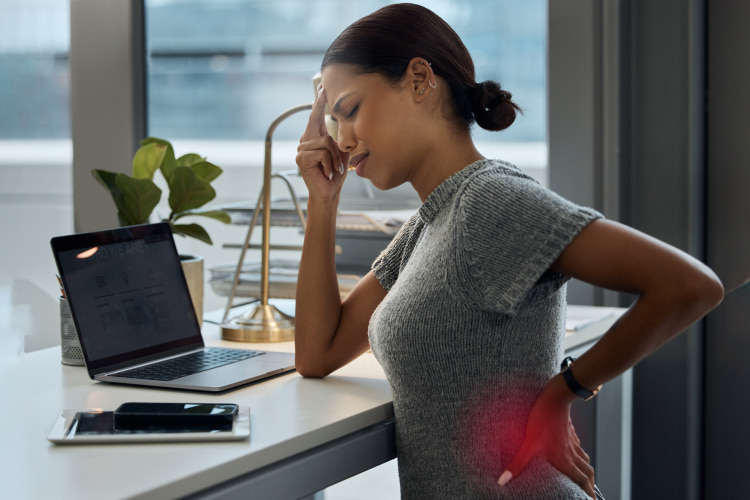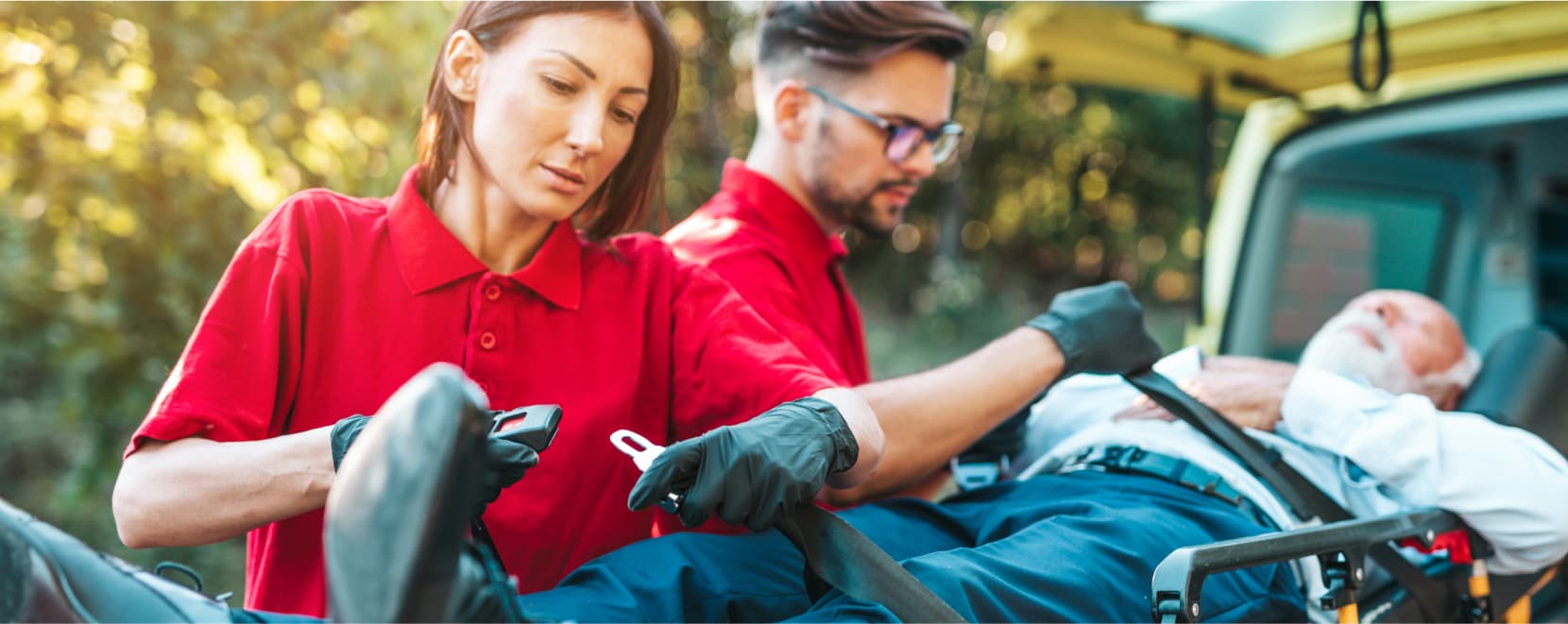Back pain is a common complaint after a fall and can be caused by a variety of traumas to the spine. Damages to the spine can have a significant impact on a person’s quality of life. So it makes it essential to seek prompt medical attention.
In this blog article, we will explore the symptoms of back pain after fall. Also, you will find out the common spinal injuries that can result from a fall. And at the end, we will discover the treatment options available. Understand the nature of your injury and the available treatment options. All this is key to achieving a successful recovery. We hope this article will provide you with the information you need. And it will help you to take the necessary steps to manage your back pain and get back to living your life.
Common Spinal Injuries From Fall
Here are some common spinal injuries that can occur:
- Herniated disc. A slip and fall can cause the discs between the vertebrae to rupture or slip out of place. This causes pain and limited mobility.
- Compression Fracture. It occurs when a vertebra in the spine is compressed, usually from a fall from a height. It causes severe pain and difficulty moving.
- Spinal stenosis. This condition is caused by the narrowing of the spinal canal, resulting in pressure on the spinal cord and nerve roots, leading to pain, numbness, and weakness.
- Spondylolisthesis. This occurs when a vertebra slips out of place and onto the vertebra below it. This causes lower back pain, muscle spasms, and difficulty moving from a fall injury.
- Whiplash. This is a neck injury that can occur when the head is jerked backward or forward suddenly. It causes strain on the neck muscles and ligaments.
Spinal injuries resulting from a slip and fall can range from minor to severe. They may require immediate medical attention. If you have experienced a fall and are experiencing back pain, it is important to seek medical attention after. It will help you determine the injury’s extent and receive proper treatment.
Herniated Disc
A herniated disc is a condition in which the soft inner core of a spinal disc pushes through the tough outer layer and presses on nearby nerves. This can cause:
- pain
- weakness
- numbness in the back, legs, and arms
The most common cause of a herniated disc is the natural aging process. It causes the discs to become less flexible and more prone to tearing. However, a herniated disc can also result from a sudden injury or trauma, such as a fall.
Treatment for this spinal injury from a fall usually involves a combination of:
- rest
- physical therapy
- pain management
In some cases, surgery may be necessary to remove the damaged portion of the disc and relieve pressure on the nerves.
Compression Fracture
Compression fracture refers to the compression or collapse of a vertebra in the spine, which can occur due to a fall or trauma. Older adults with osteoporosis are at a higher risk of experiencing compression fractures. Symptoms of compression fractures can include:
- severe back pain
- difficulty standing or walking
- loss of height
- spinal deformity
Treatment options for compression fractures may include:
- pain management
- bed rest
- physical therapy
- in severe cases, surgery
Spinal Stenosis
Spinal stenosis is an injury from a fall where the spinal canal narrows, putting pressure on the spinal cord and nerves, and this can cause such symptoms like
- pain
- numbness
- weakness
Degenerative changes in the spine can cause the condition. For example, bone spurs or herniated discs. Or by other factors, such as tumors or spinal injuries. Treatment for spinal stenosis typically involves:
- pain management
- physical therapy
- sometimes surgery to relieve pressure on the spinal cord or nerves
Spondylolisthesis
Spondylolisthesis is a spinal condition where one vertebra slips out of its normal position and moves forward, often causing back pain and nerve compression. A variety of factors can cause this condition. They include degenerative changes, stress fractures, or congenital defects. Symptoms may include:
- lower back pain and injury from a fall
- muscle weakness
- numbness
- tingling sensations in the legs
Treatment options range:
- physical therapy
- pain management
- surgical interventions
It all depends on the severity of the condition. Consult a healthcare specialist if you suspect you may have spondylolisthesis. Early intervention can improve outcomes and prevent further damage to the spine.
Whiplash
It is a common spinal injury from a fall. It refers to the sudden, rapid movement of the head and neck. This can cause strain or sprain in the soft tissues of the neck. Whiplash can cause symptoms such as:
- neck pain
- stiffness
- headaches
- dizziness
- numbness or tingling in the arms or hands
In some cases, the symptoms of whiplash may not appear until several hours or days after the accident. Treatment for whiplash may include
- rest
- physical therapy
- chiropractic care
- pain management

Slip and Fall Back Pain Symptoms
Here are some common slip and fall back pain symptoms to look out for:
- Muscle stiffness. After a slip and fall, you may experience muscle stiffness in your back, making it difficult to move.
- Lower back pain and injury from a fall. You may experience lower back pain, which can range from mild discomfort to severe pain.
- Upper back pain. The pain may occur in the upper back, near the shoulders, in some cases.
- Spinal cord injury. A slip and fall accident can result in a spinal cord injury. It can cause severe pain, numbness, or even paralysis.
- Nerve damage. It can also occur due to a slip-and-fall accident. It can result in pain, tingling, or numbness in the back.
- Difficulty standing or walking. Back pain can make it difficult to stand or walk, and you may feel unsteady or off-balance.
- Loss of range of motion. Back pain can cause a loss of range of motion, making it difficult to perform daily activities.
Are you experiencing any of these slip and fall back pain symptoms? Then it is important to seek medical attention as soon as possible.
Treatment for Back Pain After Fall
Here are some common treatments that your healthcare provider may recommend:
- Rest and ice. Resting the affected area and applying ice can help reduce pain and inflammation.
- Pain medications. Over-the-counter pain relievers can help manage pain and inflammation. For example, such as ibuprofen or acetaminophen.
- Physical therapy. A physical therapist can work with you to develop a customized exercise plan. it will improve flexibility, strength, and range of motion.
- Chiropractic care. Chiropractic adjustments can help alleviate pain and restore function to the affected area.
- Massage therapy. Massage therapy can help relax muscles and improve circulation to the affected area.
- Surgery. In rare cases, surgery may be necessary to treat severe or chronic back pain.
It is important to follow your healthcare provider’s instructions and attend all recommended appointments. It will ensure proper healing and prevent further injury.
FAQ
When should I worry about back pain after a fall?
You should worry about back pain after a fall if you experience severe back pain that does not improve after a few days. Of if other symptoms, such as numbness or weakness in the legs accompany it. A doctor can evaluate your slip and fall back pain symptoms. He will determine if further testing or treatment is necessary.
How do I know if my back pain is serious?
Your back pain may be a sign of a more serious condition if:u003cbru003e- Fever accompanies it u003cbru003e- It is serveu003cbru003e- It results from a fall or injuryu003cbru003eYou should seek medical attention if your pain is persistent or worsening. u003cbru003e
What happens if back pain is left untreated?
If left untreated, back pain can lead to chronic pain and disability. It can also increase the risk of developing:u003cbru003e- depressionu003cbru003e- anxietyu003cbru003e- other mental health conditionsu003cbru003eSeeking early treatment can help prevent these complications.





I recently had a fall and experienced severe back pain. It’s crucial to seek medical attention promptly after a fall to ensure proper care. Pay attention and take care!
I fell last year nov 2023. Now when I sleep on my back, my back feels numb and I battle to turn on my sides. Is it serious